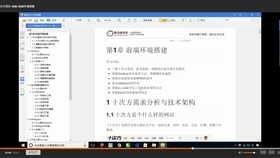"Ultimate Guide to Grooming Your Pet at Home: A Comprehensive Step-by-Step Guide for Groom for Pets"
Guide or Summary:IntroductionPreparationBrushingClipping and TrimmingShampooingFinishing TouchesIntroductionAs pet owners, we understand the unconditional l……
Guide or Summary:
Introduction
As pet owners, we understand the unconditional love and companionship our furry friends bring into our lives. However, the daily upkeep, including grooming, is an essential aspect that often gets overlooked. Grooming your pet at home not only saves you the hassle of frequent trips to the groomer but also allows you to establish a strong bond with your pet. This ultimate guide to grooming your pet at home will provide you with a comprehensive step-by-step approach, ensuring your pet looks and feels their best.
Preparation
Before diving into the grooming process, it's crucial to prepare your workspace, tools, and your pet. A well-lit, clean, and comfortable area is ideal for grooming your pet. Gather all necessary grooming tools such as brushes, clippers, scissors, and shampoo. Make sure these tools are in good condition and appropriate for your pet's breed and coat type.
It's also essential to familiarize your pet with the grooming tools. Let them sniff and explore the tools before starting. This step will help your pet feel more comfortable during the grooming session.
Brushing
Brushing is the foundation of any grooming routine. It helps remove loose fur, prevent matting, and distribute natural oils throughout your pet's coat. The type of brush you use will depend on your pet's coat type. For example, a slicker brush is excellent for dogs with thick, long hair, while a bristle brush is suitable for short-haired breeds.

Start brushing in a gentle, circular motion, moving from the neck down to the tail. Pay extra attention to areas prone to matting, such as under the arms and around the ears. If matting is severe, you may need to use a dematting tool or consult a professional groomer.
Clipping and Trimming
Clipping and trimming are necessary for maintaining your pet's coat and preventing overgrowth of hair. The frequency of grooming will depend on your pet's breed and coat type. Some breeds require regular grooming, while others may only need occasional touch-ups.
When clipping, start with the longest areas first and work your way down. Use clippers designed for your pet's coat type and size. Be cautious not to cut too close to the skin, especially around sensitive areas like the face and paws.
For trimming, focus on areas that need shaping, such as the face, legs, and tail. Use scissors for precise cuts and avoid pulling or tugging the fur, which can cause discomfort or injury.

Shampooing
Shampooing is essential for maintaining your pet's skin and coat health. It helps remove dirt, debris, and excess oils. Choose a pet-specific shampoo that is suitable for your pet's coat type and skin condition. Avoid using human shampoo, as it can be too harsh for your pet's skin.
Wet your pet's coat thoroughly before applying shampoo. Massage the shampoo into your pet's skin, being careful not to get it in their eyes or ears. Rinse thoroughly with warm water and dry your pet with a clean towel.
Finishing Touches
After completing the main grooming steps, you can add finishing touches to enhance your pet's appearance. This may include applying a coat conditioner, trimming facial hair, or styling your pet's ears.
Remember, grooming is not just about appearance but also about your pet's health and well-being. Regular grooming can prevent skin infections, matting, and other issues that can arise from neglect.

Grooming your pet at home is a rewarding experience that strengthens the bond between you and your furry friend. By following this comprehensive step-by-step guide, you can ensure your pet looks and feels their best. Remember to start slowly and build up your pet's tolerance to grooming over time. With patience and consistency, you'll be well on your way to becoming a grooming pro for your beloved pet.